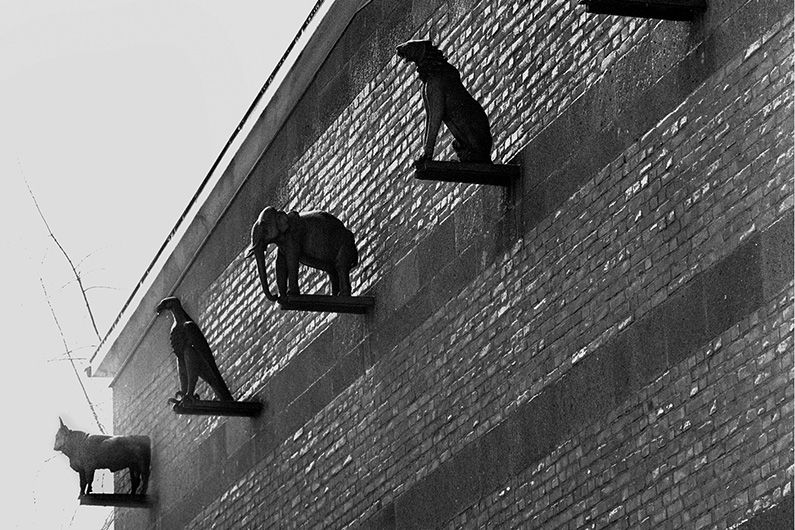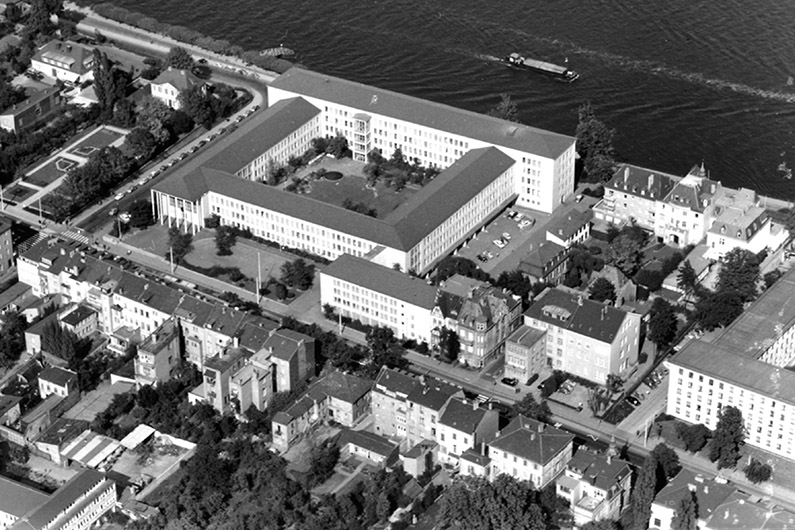This period is as long gone as a divided Germany with Bonn as its capital. In 1989 the government demerged Deutsche Bundespost (federal post office) and split it into three separate public undertakings: Bundespost Postbank, Bundespost Postdienst and Bundespost Telekom. But unfortunately, the massive bureaucracies of these undertakings weren’t a good fit with Europe’s free markets and the emerging information age. Thus, five years year later, the so called second postal reform ushered in privatisation, which resulted in DHL, Postbank and Telekom all being headquartered in Bonn. Privatisation was architecturally embodied by the Post Tower (2002), which was within hailing distance of the Lange Eugen office tower. The Ministry of Post and Telecommunications, which in 1988 moved from the city centre to a new building near the Rhine, dissolved itself on 31 December 1997.
However, the office building on the corner of Zweite Fährgasse and Adenauerallee did not remain vacant for long. Its first tenant, in 1988, was the Foreign Ministry. And in 2000, the Federal Court of Audit, previously headquartered in Frankfurt, took over the building – a compensatory measure promulgated by the Berlin/Bonn Act.
Like the sculptures of animals behind the building, the bronze plaque that still adorns the entrance to its bright foyer was by Hans Wimmer. Even in an era in which a government post and telecommunication monopoly is as unthinkable as restrictions on global communication the plaque, shaped like a postal seal, displays the Federal Eagle and the inscription B(undes) M(inister) A(nno) D(omini) MCMLV (“Federal Minister the Year of our Lord MCMLV”). It has been hanging there since 1955, the year in which Germany’s national sovereignty was reinstated.

